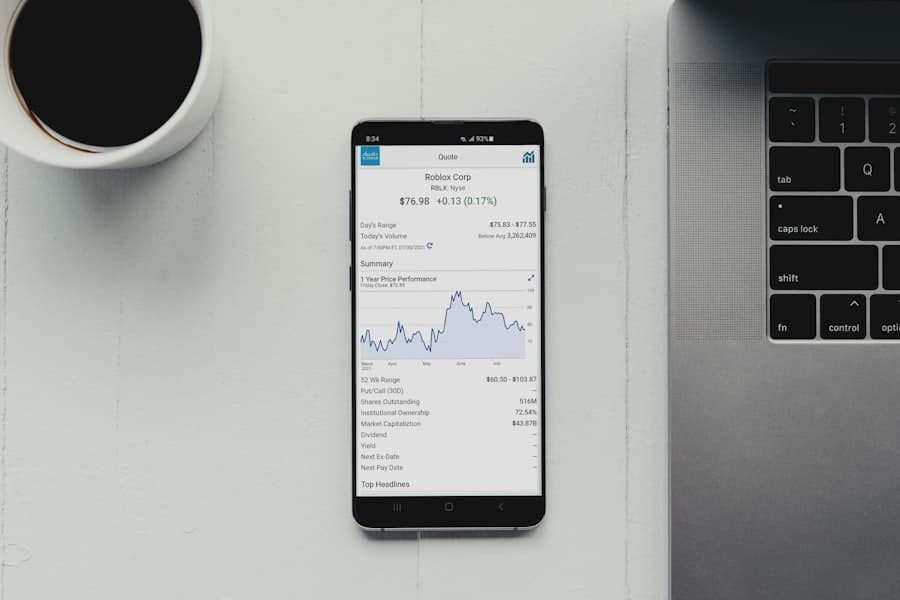Open Banking represents a transformative shift in the financial services landscape, characterized by the practice of sharing financial data between banks and third-party service providers through secure application programming interfaces (APIs). This paradigm shift is driven by the need for greater transparency, competition, and innovation within the banking sector. By allowing consumers to grant access to their financial data, Open Banking empowers them to make more informed decisions regarding their finances, while also fostering a more competitive environment for financial institutions.
The concept has gained traction globally, with various countries implementing regulations to facilitate its adoption. The roots of Open Banking can be traced back to the European Union’s Revised Payment Services Directive (PSD2), which came into effect in January 2018. This directive mandates that banks must provide third-party providers with access to customer data, provided that customers consent to such access.
The implications of this directive are profound, as it not only encourages innovation but also enhances consumer choice. As a result, Open Banking is reshaping the way consumers interact with their financial institutions, leading to a more dynamic and responsive financial ecosystem.
Key Takeaways
- Open Banking is a system that allows third-party financial service providers to access consumer banking, transaction, and other financial data from banks and non-bank financial institutions through the use of application programming interfaces (APIs).
- Open Banking has forced traditional financial institutions to adapt and innovate in order to remain competitive in the market, leading to increased collaboration and partnerships with fintech companies.
- Consumers benefit from Open Banking through increased access to personalized financial products and services, improved transparency, and enhanced control over their financial data.
- Technology plays a crucial role in Open Banking, enabling secure data sharing, real-time transactions, and the development of innovative financial products and services.
- While Open Banking offers numerous benefits, it also presents challenges and risks such as data privacy concerns, security vulnerabilities, and potential misuse of consumer data, requiring robust regulatory frameworks and compliance measures to mitigate these risks.
The Impact of Open Banking on Financial Institutions
The advent of Open Banking has compelled traditional financial institutions to reevaluate their business models and strategies. Banks are no longer the sole custodians of customer data; instead, they must adapt to a landscape where third-party providers can offer similar or even superior services. This shift has led to increased competition, prompting banks to innovate and enhance their offerings.
For instance, many banks are investing in technology to develop their own APIs, enabling them to collaborate with fintech companies and other service providers. This collaboration can lead to the creation of new products and services that cater to evolving consumer needs. Moreover, Open Banking has encouraged banks to focus on customer experience.
With the rise of fintech solutions that offer seamless and user-friendly interfaces, traditional banks are under pressure to improve their digital platforms. This has resulted in significant investments in technology and user experience design. Banks are now prioritizing features such as mobile banking apps, personalized financial advice, and real-time transaction notifications.
As a consequence, financial institutions that embrace Open Banking are likely to enhance customer loyalty and retention, as they provide more value-added services that meet the demands of modern consumers.
The Benefits of Open Banking for Consumers
For consumers, Open Banking offers a plethora of benefits that enhance their financial management capabilities. One of the most significant advantages is the ability to access a wider range of financial products and services tailored to individual needs. By allowing third-party providers to access their financial data, consumers can receive personalized recommendations for loans, credit cards, and investment opportunities.
This level of customization was previously unattainable in a more closed banking environment, where options were often limited to what a single bank could offer. Additionally, Open Banking promotes greater transparency in fees and charges associated with financial products. Consumers can easily compare offerings from different providers, enabling them to make informed choices that align with their financial goals.
For example, budgeting apps that utilize Open Banking can aggregate data from multiple accounts, providing users with a comprehensive view of their finances. This holistic perspective empowers consumers to identify spending patterns, set budgets, and ultimately make better financial decisions. The democratization of financial information through Open Banking is a game-changer for consumers seeking control over their financial futures.
The Role of Technology in Open Banking
Technology is at the heart of Open Banking, serving as the enabler that facilitates data sharing and collaboration between banks and third-party providers. APIs play a crucial role in this ecosystem by allowing secure access to customer data while maintaining privacy and security standards. These APIs enable developers to create innovative applications that can interact with banking systems in real-time, leading to the development of new services that enhance customer experience.
Moreover, advancements in artificial intelligence (AI) and machine learning (ML) are further propelling the capabilities of Open Banking. Financial institutions can leverage these technologies to analyze vast amounts of data and gain insights into consumer behavior.
This not only benefits lenders by reducing risk but also opens up lending opportunities for consumers who may have been overlooked by conventional credit assessment methods.
The Challenges and Risks of Open Banking
Despite its numerous advantages, Open Banking is not without challenges and risks. One of the primary concerns revolves around data security and privacy. As financial institutions share sensitive customer information with third-party providers, the potential for data breaches increases significantly.
Cybersecurity threats pose a substantial risk, as malicious actors may attempt to exploit vulnerabilities in APIs or other systems. Consequently, banks must invest heavily in robust security measures to protect customer data and maintain trust. Another challenge lies in the regulatory landscape surrounding Open Banking.
While regulations like PSD2 have paved the way for its implementation, navigating compliance can be complex for both banks and third-party providers. Ensuring adherence to various regulations across different jurisdictions requires significant resources and expertise. Additionally, there is a risk that overly stringent regulations could stifle innovation by creating barriers for new entrants in the market.
Striking a balance between fostering innovation and ensuring consumer protection is crucial for the sustainable growth of Open Banking.
Open Banking Regulations and Compliance
The regulatory framework governing Open Banking is essential for its successful implementation and operation. In Europe, the PSD2 directive serves as a cornerstone for Open Banking initiatives, mandating that banks provide access to customer data upon consent. This regulation not only promotes competition but also establishes guidelines for data security and consumer protection.
Financial institutions must comply with strict requirements regarding customer authentication and data sharing practices to ensure that consumer information is handled securely. In addition to PSD2, other regions have begun developing their own regulatory frameworks for Open Banking. For instance, the United Kingdom has established its own set of guidelines through the Competition and Markets Authority (CMA), which mandates that the nine largest banks in the UK implement Open Banking standards.
Similarly, countries like Australia have introduced their own Consumer Data Right (CDR) legislation, which empowers consumers with greater control over their data. As these regulations evolve, it is imperative for financial institutions and third-party providers to stay informed and adapt their practices accordingly.
Open Banking and Financial Inclusion
Open Banking has the potential to significantly enhance financial inclusion by providing underserved populations with access to essential financial services. Traditionally marginalized groups often face barriers when trying to access credit or banking services due to a lack of credit history or insufficient documentation. However, with Open Banking’s emphasis on data sharing, alternative data sources can be utilized to assess creditworthiness more accurately.
For example, fintech companies leveraging Open Banking can analyze transaction histories from various accounts to evaluate an individual’s financial behavior rather than relying solely on traditional credit scores. This approach allows lenders to extend credit to individuals who may not have qualified under conventional criteria. Furthermore, Open Banking can facilitate access to low-cost banking services through innovative solutions such as digital wallets or peer-to-peer lending platforms, thereby promoting greater financial participation among previously excluded populations.
The Future of Open Banking and Its Potential Impact on the Financial Industry
As Open Banking continues to evolve, its potential impact on the financial industry is profound and far-reaching. The ongoing integration of technology will likely lead to even more innovative solutions that cater to diverse consumer needs. For instance, we may see the emergence of advanced personal finance management tools that utilize AI-driven insights to help consumers optimize their spending habits and savings strategies.
Moreover, as competition intensifies among financial institutions and fintech companies alike, we can expect a surge in collaborative efforts aimed at enhancing customer experience. Partnerships between banks and technology firms will likely become more common as both parties seek to leverage each other’s strengths. This collaborative spirit could lead to the development of new products that combine traditional banking services with cutting-edge technology.
In conclusion, while challenges remain in terms of security and regulatory compliance, the trajectory of Open Banking suggests a future where consumers enjoy greater choice, convenience, and control over their financial lives. As this movement gains momentum globally, it will undoubtedly reshape the financial landscape in ways we have yet to fully comprehend. The ongoing dialogue surrounding Open Banking will be crucial in addressing concerns while maximizing its potential benefits for all stakeholders involved in the financial ecosystem.
Open Banking is revolutionizing the financial industry by creating transparent ecosystems that benefit consumers and businesses alike. This innovative approach allows for greater access to financial data and services, leading to increased competition and improved customer experiences. For those interested in staying ahead of the curve in the tech world, check out this article on the Samsung Galaxy S21 to learn about the latest advancements in smartphone technology.
FAQs
What is open banking?
Open banking is a system that allows third-party financial service providers to access financial information from banks and other financial institutions through the use of APIs (Application Programming Interfaces). This allows for the development of new financial products and services, as well as improved customer experiences.
How does open banking create transparent financial ecosystems?
Open banking creates transparent financial ecosystems by allowing customers to have greater control and visibility over their financial data. It enables them to securely share their financial information with third-party providers, which can help them make more informed decisions about their finances.
What are the benefits of open banking for consumers?
Open banking offers several benefits for consumers, including access to a wider range of financial products and services, personalized financial advice, and improved security and control over their financial data. It also promotes competition among financial service providers, leading to better deals and more innovative offerings for consumers.
How does open banking impact financial institutions?
Open banking presents both challenges and opportunities for financial institutions. While it may increase competition and require them to adapt to new regulations and technologies, it also allows them to collaborate with third-party providers and offer more tailored products and services to their customers.
What are the potential risks of open banking?
Some potential risks of open banking include concerns about data privacy and security, as well as the potential for unauthorized access to sensitive financial information. It is important for regulators and financial institutions to establish robust security measures and data protection standards to mitigate these risks.



